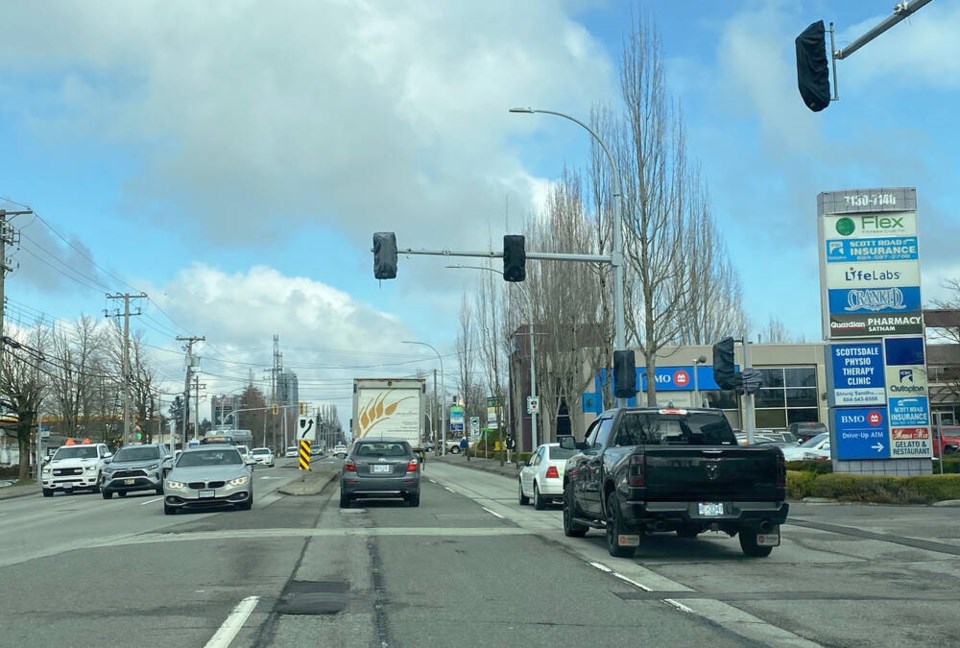The City of Delta, in partnership with the City of Surrey, is adding another safety measure on Scott Road, part of an overall safety improvement vision for the busy corridor.
A new traffic signal is being installed in the 7100-block of Scott Road, between the current traffic signals at 70th and 72nd avenues.
Delta Engineering Director Steven Lan told the Optimist the new signal will provide a safer pedestrian crossing as well as provide vehicular access to the commercial properties on either side of the road.
The joint project with Surrey also ties into the goals of Delta’s Vision Zero program, as well as a separate traffic safety initiative in conjunction with Surrey.
Delta has started public consultation on its new Vision Zero strategy.
Vision Zero is a multi-national road traffic safety project that aims to achieve a road system with no fatalities or serious injuries.
One of the key differences between Vision Zero and traditional approaches to road safety is that traffic collisions are considered preventable, viewing safety as a shared responsibility between system designers, policy makers and road users.
The guiding principles for Delta’s plan is to include a reduction in fatalities and serious collisions, improving connections to schools and community services and addressing the needs of older adults and vulnerable road users.
Meanwhile, Delta’s work with Surrey on a Scott Road corridor safety plan will be focused proposed measures between 64th and 96th avenues.
A consultant’s report last year noted that lengthy section of roadway was identified as Delta’s most significant killed and seriously injured hotspot area, while it also includes five of Surrey’s top 50 Vision Zero intersections.
The report notes half of 10 identified intersections (64 Avenue, 75A Avenue, 86 Avenue, 92 Avenue and 96 Avenue) had higher percentages of collisions reported as a casualty (fatal or injury involved).
Rear-enders were the most predominant casualty collision type, followed by left turn collisions.
The report also notes driving without due care was the most dominant contributing factor, followed by failed to yield/stop, and the contributing factors were primarily resulted in rear-end collisions.
Such collision types and causes are common within urban corridors due to frequent stop-and-go activities between signalized intersections, heavy vehicles and crossing pedestrian volumes, traffic congestion, wide intersections and limited gaps for left-turn vehicles, as well as relatively high vehicle speed on a straight roadway, the report adds.



